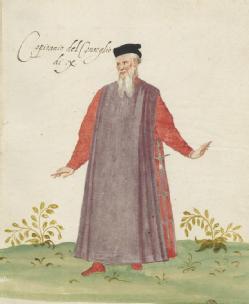Aims and Assessment
Aims
- To evaluate and critique the history of crime and punishment across Europe between c. 1500 and c. 1750.
- To understand how the history of crime and punishment can be accessed through a diverse range of textual, visual, and material sources.
- To analyse and compare different types of sources and enhance their ability to develop a historical argument.
- To engage with historiographical debates and think about the history and legacy of different historical concepts.
Assessment
This module has the Final Year Advanced Option 2 (Assessed) assessment. For the deadlines, see the Undergraduate HandbookLink opens in a new window.
-
Seminar contribution (10%)
-
1500-word review of a historiographical debate (10%)
-
3000-word primary source review (40%)
-
3000-word essay (40%)
For details of the submission of assessed work, see hereLink opens in a new window.
NB Each assessed element will be marked according to the standard assessment criteriaLink opens in a new window. Students should ensure that they follow the MHRA style guideLink opens in a new window carefully, especially for the presentation of the footnotes and the bibliography.
Seminar Contribution
- This will be assessed across all seminars according to the seminar contribution guidelinesLink opens in a new window.
- There will be formative mid-module self-evaluation which will be adjusted by the tutor if necessary. This is an opportunity for students to reflect on their seminar contribution so far and consider ways of improving it in future. NB This will not represent the assessed mark for the module. NB By 12.00 on the Friday of Week 10 of Term 1, please e-mail me (j.d.davies@warwick.ac.uk) the formative self-evaluation formLink opens in a new window with your comments and suggested mark based on the 20 point marking scaleLink opens in a new window.
- There will also be summative end of module self-evaluation which will be adjusted by the tutor if necessary. This is an opportunity for students to reflect on their seminar contribution across the whole module. NB This will represent the assessed mark for the module. It will be based on the 20 point marking scaleLink opens in a new window. NB Students must submit the summative self-evaluation formLink opens in a new window via Tabula according to the deadline in the Undergraduate HandbookLink opens in a new window.
Review of a Historiographical Debate
I suggest you answer the question from Seminars One and Two: 'What are the key issues which the historian of crime and punishment needs to address?' Using the bibliography for these seminars as a starting point, I suggest that you select and engage with at least six articles, book chapters, or essays which take a range of approaches to the history of crime and punishment in early modern Europe. Identify key aspects of these approaches and key issues or questions which these approaches raise. Try to structure your review thematically, comparing and contrasting the different approaches rather than discussing one approach and then the other approach.
Primary Source Review
The aim of the Primary Source Review is to focus your attention on primary sources and allow you to seriously engage with them.
The key question you are trying to answer with the review: How can we use this source (or these sources) to illuminate crime and punishment in early modern Europe? NB Sources need to have been produced in a European country in the period c. 1500-c.1750. NB As such you should choose a source first, not a theme, and that source should drive the content of the review. (In this sense, this is different from what you are asked to do in a normal research essay)
Choose a sizeable source(s) eg. a book, or a comparable quantity of written/visual sources NB Please choose your source(s) in consultation with the module tutor. They will be able to advise you on the sources available. By the Friday of Week 2 of Term 2 at the latest you should let your tutor know by email which source(s) you have chosen.
Having chosen the source, read or examine it carefully, BEFORE you do too much secondary reading. Go back and read/examine it again after you have read more about its context.
The Review should include discussion of:
- what kind of source is it? Its form, author, purpose, language, audience, context.
- what forms of crime and punishment are represented in the source?
- what can the source tell us about contemporary attitudes to those forms of crime and punishment?
- what are the advantages and disadvantages of the source for an understanding of crime and punishment in early modern Europe?
Examples of topics could include:
- a series of court records or pardon tales or press reports or chronicles or journals or letters
- one or more literary works (novels, plays, poems, ballads, operas, etc.)
- a group of images by a particular artist or by different artists. In addition to the questions above, you might discuss why did the artist choose that form? and what role did patronage play in their creation?
- NB I am very happy to advise you on possible sources so please do speak to me about this.
Essay
You may use one of the seminar questions as the question for your essay. If you would prefer another question, please speak with me and we can work out one together. In either case, I am happy to advise you about primary and secondary sources for your essay.
NB As this module aims to evaluate and critique the history of crime and punishment across Europe between c. 1500 and c. 1750, your essay should compare developments in at least three states.
Anon., Capitano del Consiglio dei Dieci, Costumes italiens, grecs et turcs (1580)
Formative Mid-Module Self-Evaluation of Seminar Contribution Form
Summative End-of-Module Self-Evaluation of Seminar Contribution Form

